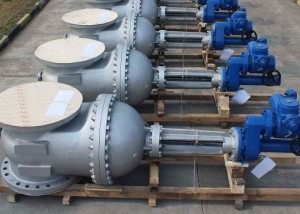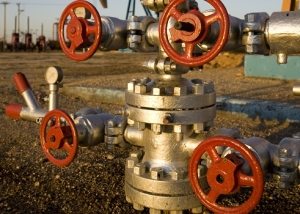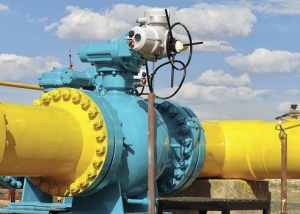A three-way thermostatic mixing valve is a device that is mounted on pipelines and performs the function of adjusting the temperature of the working medium by mixing two streams with different temperatures (hot and cold). By the principle of operation, this device resembles a mixer. In addition to regulating the temperature of the coolant in the communication, three-way thermostatic valves perform other functions.
Content [Hide]
- 1 Varieties and purposes of such valves
- 2 Operational field of three-way mixing devices
- 3 Features of thermostatic three-way mixing valves
- 4 The device and principle of operation of the three-way valve
- 5 Types of drives
- 6 Schemes for connecting the valve to the heating communication
- 7 When is a simplified valve allowed?
Varieties and purposes of such valves
First of all, it is necessary to deal with the classification of these products. Today, there are three main types of valves, which differ in principle of operation. Consider these types:
- mixing valves;
- separation devices;
- switching products.
The names of the above devices indicate the operational accessories and the functions that they perform during operation. Mixing valves are used to mix the flow of the medium in the pipeline. This is necessary in order to obtain an acceptable temperature of the outlet water or in the heating radiator (depending on the type of communication). Separating devices during operation perform the main function - separation of flows. The third type of valve switches the flow of the working medium in communication, thereby creating different directions of its movement.
How to identify a particular type of device? This problem, as a rule, is solved quite simply: in most cases, the principle of the product’s operation is depicted on the surface of the housing. On switching models, such designations may be absent, however, they are also easy to identify, since their appearance has significant differences from the other two types of devices.

The mixing valve is designed to connect the flow of working fluid in the line to get the desired outlet temperature
Mixing or separation of the flow of the working medium is necessary to obtain the necessary indicators of the temperature of the coolant in different circuits of the heating system. And switching models are used in double-circuit type heating appliances. In this case, a gas boiler acts as a heating device, the heated coolant of which, in turn, is sent to various heat exchangers.
Operational field of three-way mixing devices
Today, three-way thermostatic mixing valves are widely used in heat pipelines. They are especially recommended for use in heating systems that operate on solid fuel. In addition, in domestic conditions, such valves are necessary in order to regulate the increased temperature in the pipeline transporting hot water. The temperature indicator in this case can reach +95 ° C, which is a high indicator.
Note! The installation of such devices in front of plastic pipelines transporting hot water eliminates the possibility of overheating of the polymer material.
Consider the main functions that such mixing valves perform:
- distribution of flows coming from different pipelines;
- ensuring a normal temperature of the working medium at the outlet. This occurs by mixing hot and cold streams;
- using a three-way mixing device, you can adjust the temperature of the water at different intervals, which is very convenient.
Such a device must be installed in heating communications and hot water systems. As a rule, such valves are installed in apartments and private houses with autonomous heating.
Features of thermostatic three-way mixing valves
The service life of such products varies from 3 to 5 years and is determined by the valve model and its quality characteristics. Consider the main differences between the different models:
- dimensions;
- threaded connection option;
- appointment (for heating communications or hot water supply).
Consider the characteristics of the average three-way valve model:
- as a rule, such devices are made of non-ferrous metals (brass, bronze);
- in order to enhance the corrosion protection of three-way mixing devices, their housing is covered with a protective layer of nickel or chromium;
- the maximum working pressure in the communication on which the valve is mounted must not exceed 10 atmospheres or 1 MPa;
- installation of such products is allowed in communications with a certain temperature of the working environment. The temperature should not exceed a certain mark, namely +95 ° C. However, in some cases it is allowed to install three-way valves in communications, the temperature of which reaches 110 ° C (for example, solar panels);
- manual control of such devices allows you to adjust the temperature of the coolant in the range from 20 to 60 ° C;
- threaded connections of such mixing valves can have the following geometric parameters: Rp3 / 4; G3 / 4; G1; G1 ½ (parameters are indicated in inches);
- the throughput rate of such products varies from 1.6 to 2.5 m³ / h.
The device and principle of operation of the three-way valve
The three-way thermostatic mixing valve includes several structural elements:
- case (usually made of brass);
- 3 inner chambers;
- poppet valves that perform a demarcation role and are located between the chambers;
- thermal head;
- stock.
Consider the principle of operation of a three-way thermostatic mixing valve in 2 stages:
- By acting on the stem, the passage for one flow of the working medium opens, and for the other, on the contrary, it closes. Thus, the mixing of flows in the chamber of the device and the regulation of the temperature of the coolant in communication.
- Mixed water, having reached the required temperature, moves further from the valve chamber through the pipes. From the chamber, the coolant enters the pipe through the third pipe of the device. The regulation of the stem element is controlled by a special element - a thermal head.
Note! The thermal head has a special temperature sensor, the presence of which greatly facilitates the process of controlling the stem.
Types of drives
During operation, the control of the valve depending on the temperature occurs through an external actuator. Today, you can find several types of drives, which are worth paying attention to:
- simple thermostatic;
- thermostatic head;
- electric drive;
- servo.

The valves are distinguished by different types of control, the most simple design has a conventional thermostatic device
Thermostatic drive. This type of drive is simple. In this case, the rod is pressed by expanding the working medium. The expansion is due to an increase in the temperature index of water. As a rule, valves of small dimensions are equipped with this kind of actuator at the production stage. Such a drive is removable and, if desired, can be mounted on other devices.
Three-way mixing valve with thermal head. In addition to the conventional actuator, which operates due to the thermal expansion of the working medium, the valve operation can be regulated using a special thermostatic head. Such a head includes an element capable of responding to changes in ambient temperature. Also, these products are equipped with special remote sensors, which allows you to adjust their work, focusing on the temperature indicator of the working environment. The remote sensor is located inside the pipeline (for direct contact with the coolant) and is connected to the drive by means of a capillary tube.
Electric drive. The stem can also be regulated by an electric drive, which is controlled by a special controller. The temperature of the coolant in this case is measured by electric sensors that transmit the received data to the controller. This method of controlling a three-way valve is the most common today, as well as the most accurate.
Servo valve. Servo is a simplified version of the electric valve control option. In this case, there is no controller, and the valve operation is adjusted after receiving the temperature data of the coolant directly by the drive.
Schemes for connecting the valve to the heating communication
There are several installation schemes for thermostatic three-way mixing valves. The choice of circuit depends on the role of the valve in the heating system.
The main functions that this device performs in heating communications or a hot water system:
- protection of a solid fuel boiler against condensate;
- protection of a solid fuel boiler from temperature shock, which occurs as a result of spontaneous shutdown of electric energy;
- the working environment in the underfloor heating communication should have a temperature not higher than 45 ° C. In this case, control of the required temperature is the main task of the three-way valve;
- support of necessary temperature indicators at various points of communication.
In order to protect the heating apparatus from condensation, it is necessary to remember one important rule: it is categorically not recommended to supply cooled water from the radiator network to the boiler during its operation (when it is heated). The three-way valve, which prevents the formation of condensate in the boilers, is connected using an emergency path according to the following scheme:
- Until the heater warms up to the desired temperature, the water moves in a small circle through the siding.
- When the medium reaches a temperature of 50–55 ° C, the valve opens. The result is the mixing of cold water from the communication.
- When the boiler enters the operating mode, the siding closes and the flow of the working medium moves through the radiators.
In the communication of the warm floor, the device performs the same functions. The pump forces the heated fluid to move through the tubes until it begins to cool.When the coolant begins to cool, it is fixed by a thermal head and special sensors, which serves as a signal for mixing hot water from the boiler into the underfloor heating system.

The thermostatic valve is installed in underfloor heating systems where the temperature of the working fluid must not exceed 45 degrees
Important! The three-way valve must be installed so that the pumping equipment is located on the side of the open pipe of the device.
Another scheme for connecting a three-way valve involves installing it in a heating system behind a buffer tank. The buffer tank accumulates heat and requires heating. In order to complete heating of this element of the system, the temperature indicator of the working medium must not be lower than 70 ° C. This temperature is necessary for warming the buffer tank, but it is unacceptable for radiators. Therefore, they use a three-way valve, which is able to lower this temperature to the required value.
When is a simplified valve allowed?
In fairly simple heating utilities that operate on solid fuel, it is allowed to use simplified versions of three-way valves. As a rule, such products work offline. In most cases, they do not need to have a thermal head and stem to function.
The principle of operation of a three-way valve of a simplified type is quite simple. The element that regulates the operation of such a device is placed inside its body. Such valves are adjusted to a specific temperature of the water and get it by mixing flows with different temperatures. The temperature that such a product maintains is usually indicated on its body.
The constant outlet temperature maintained by such a simplified version of the valve is constant. Consider the advantages and disadvantages of using such a device:
- plus - a more affordable cost compared to a product that is equipped with a thermal head. Savings in this case are at least 30%;
- minus - the inability to adjust the outlet water temperature.
Before purchasing a thermostatic three-way simplified mixing valve, experts recommend studying the technical documentation that governs a solid fuel heating device. This is due to the fact that there you can find the required minimum temperature, which the return coolant must correspond to.









